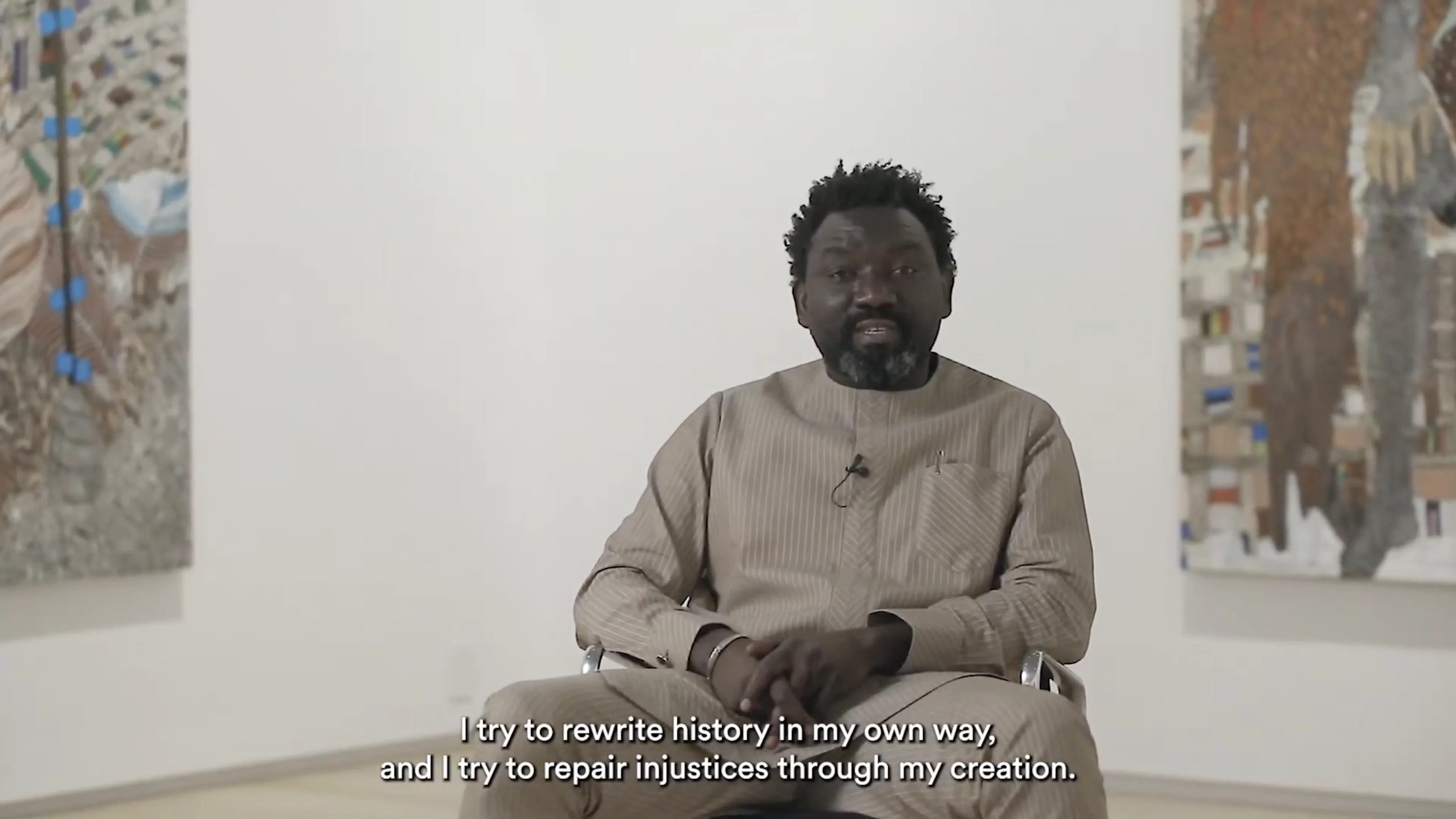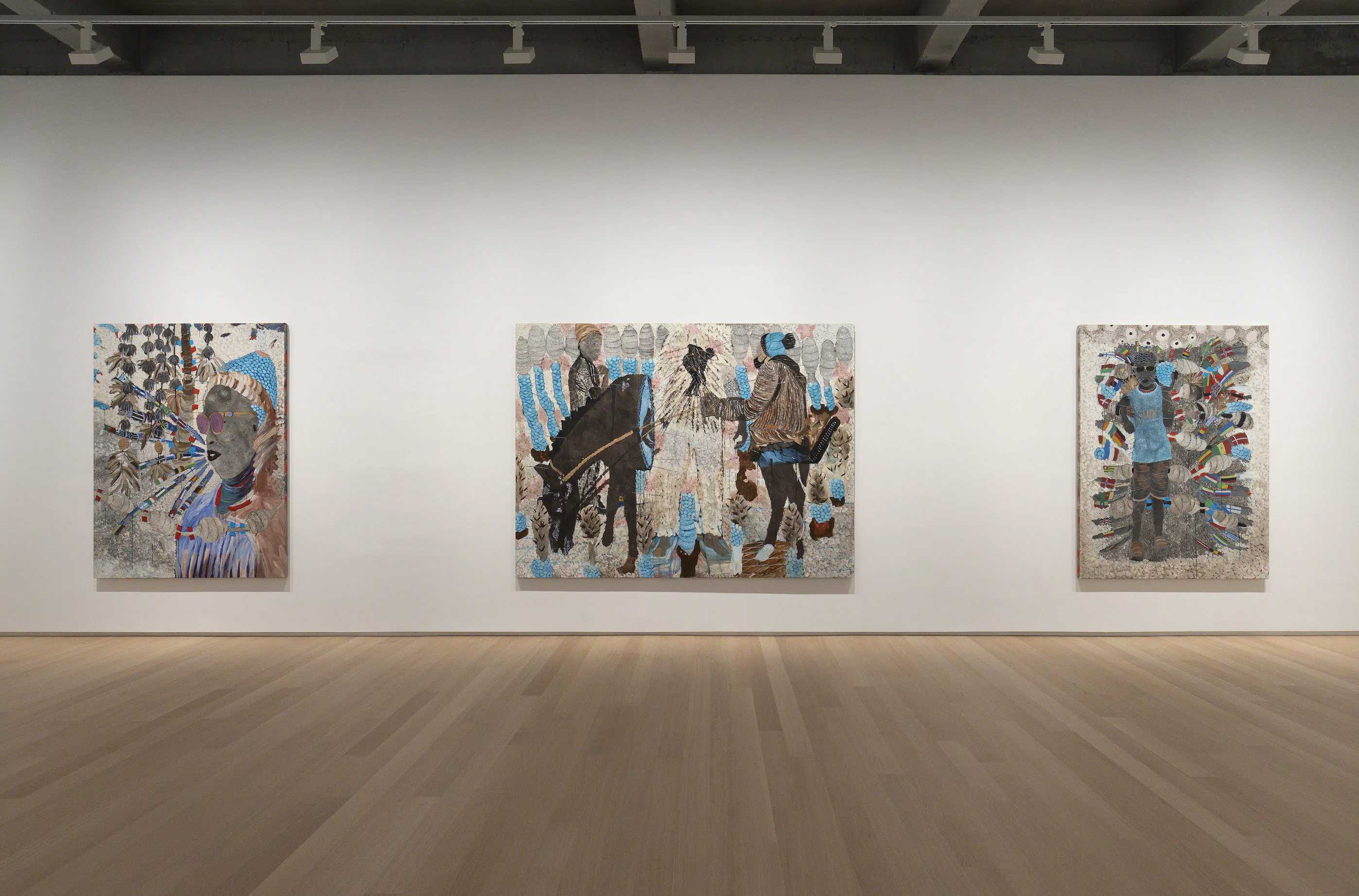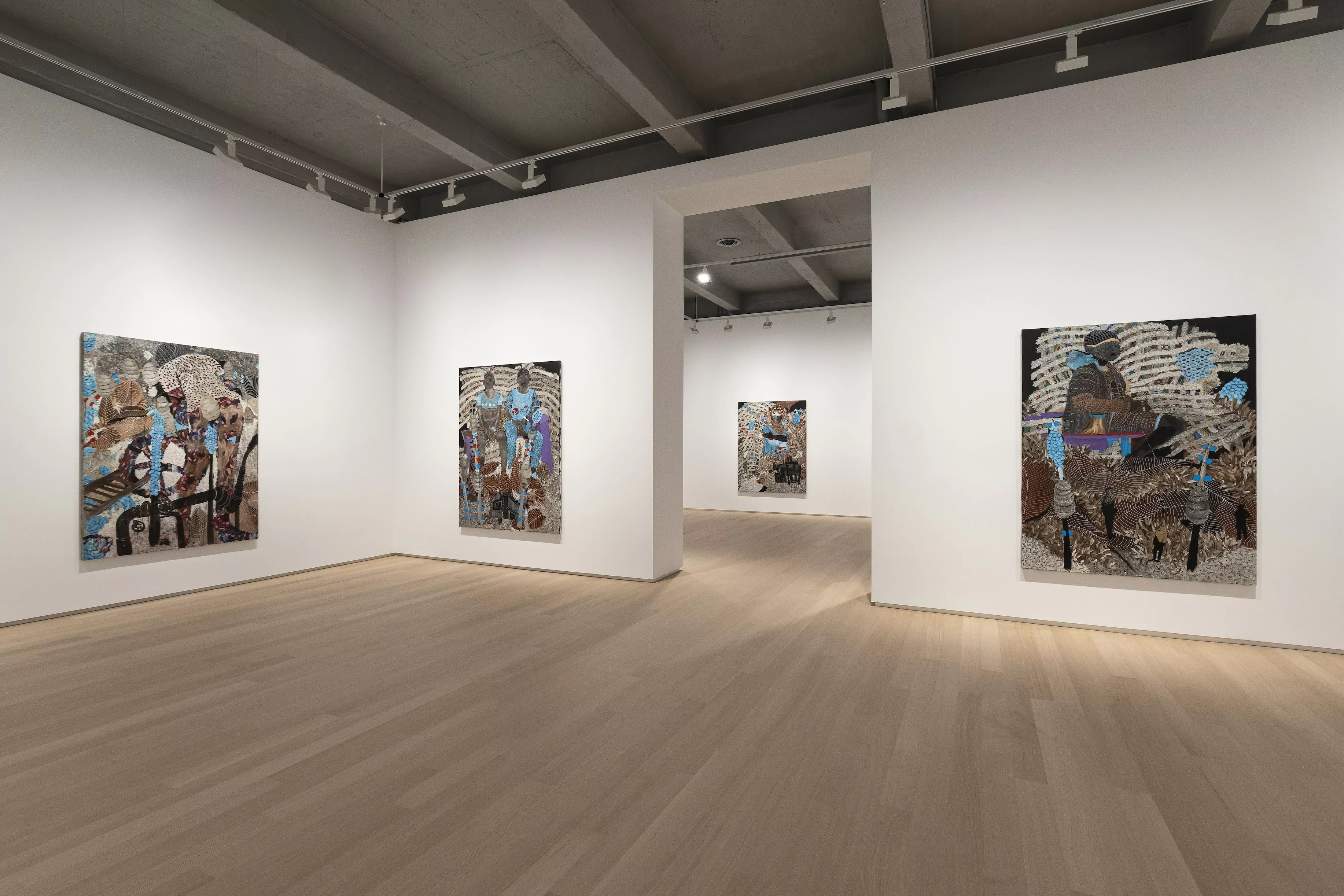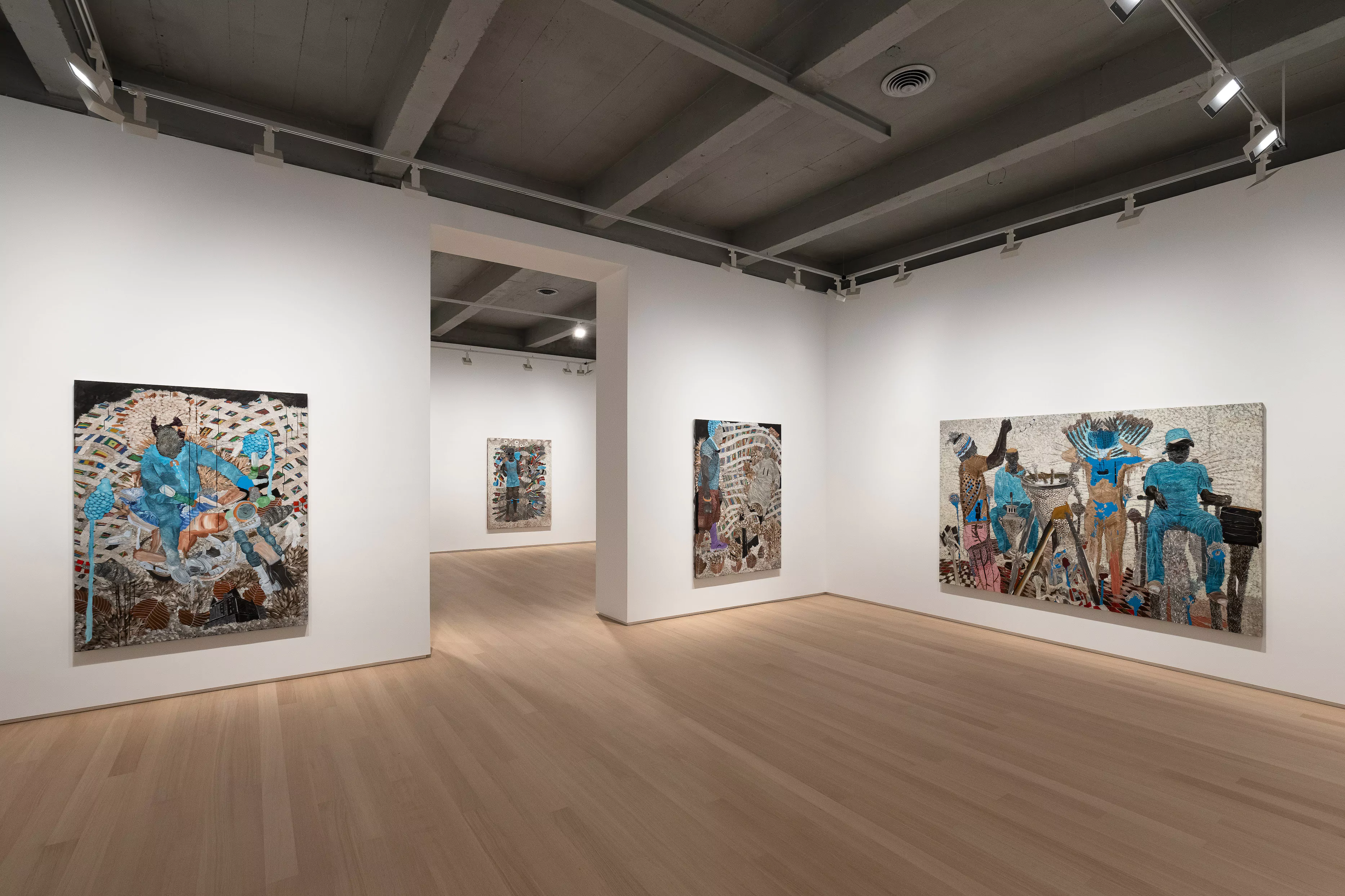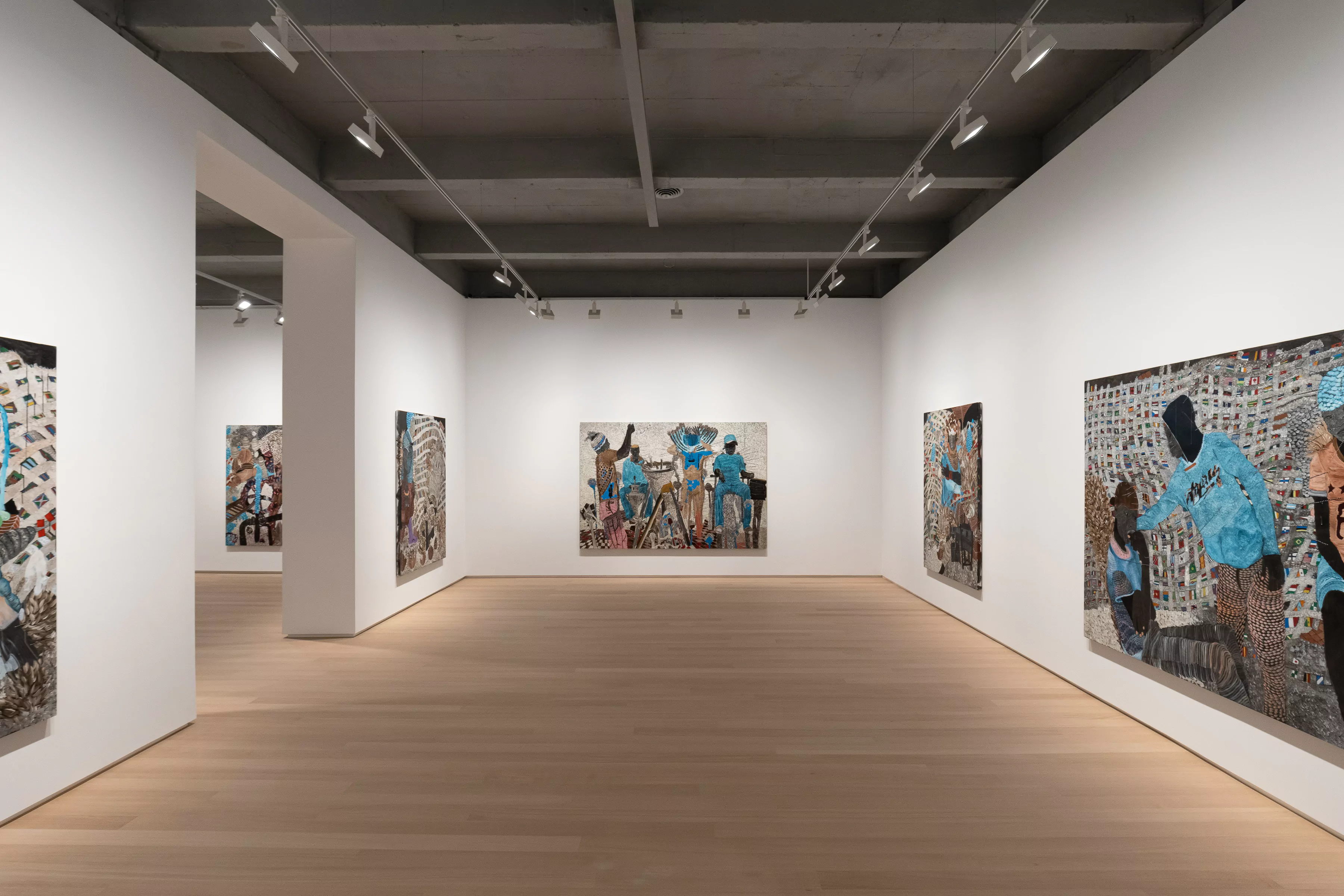
Omar Ba
Droit du sol – droit de rêver
Galerie Templon is proud to inaugurate its new space in New York with Senegalese painter Omar Ba.
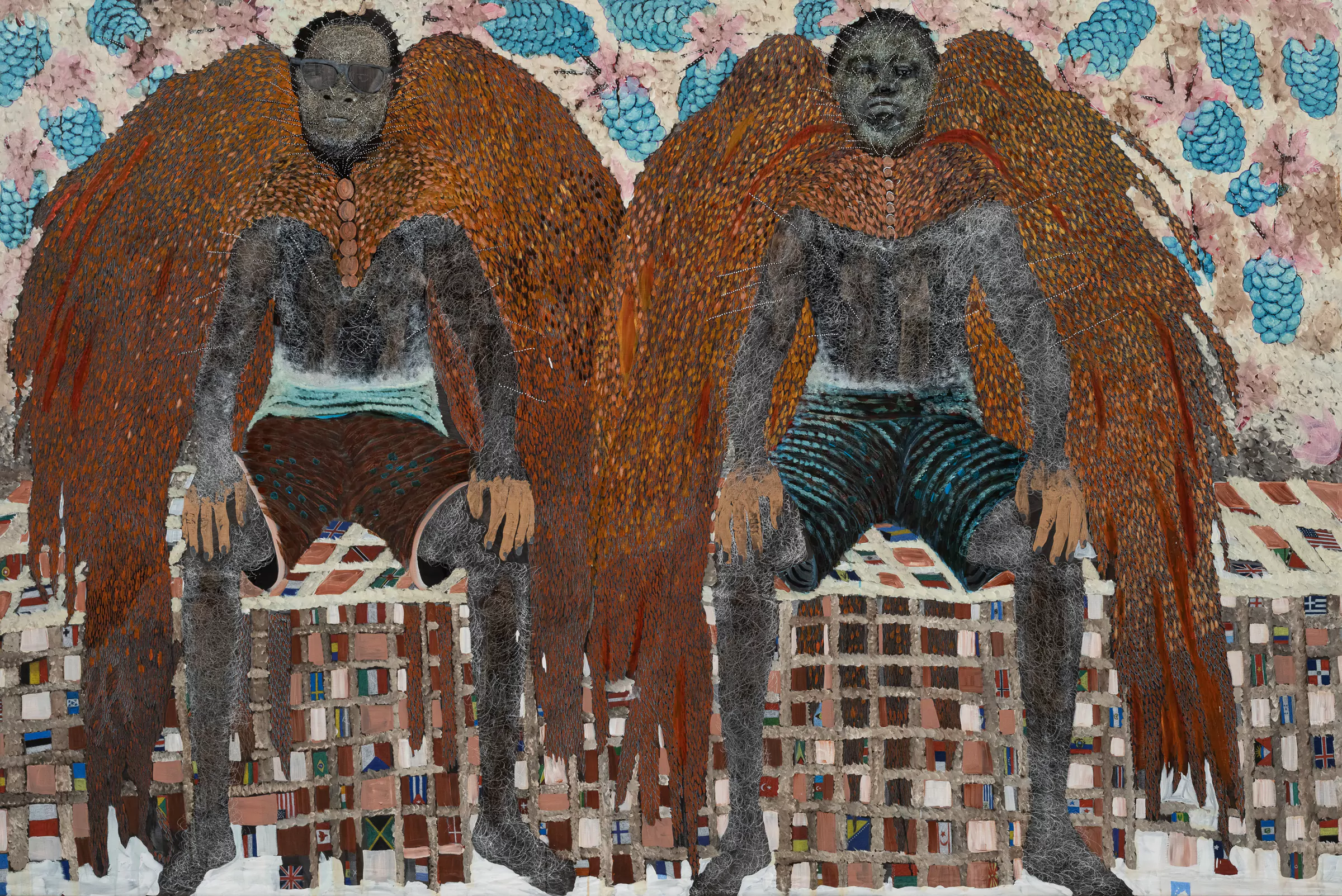
A rising star of the African scene, Omar Ba (born 1977) is a complex artist whose every artwork acts as a politically-engaged metaphor of the continent’s challenges and position on the international stage. Combining ethnic references, nods to art history and hints at the most burning current events, his extremely elaborate canvases are populated with chimeras and unexpected hybridizations between real or imaginary worlds.
For his debut in New York, a city he discovered in 2019-2020, during his residency at the International Studio and Curatorial Program (ISCP), Omar Ba explores the perception of black communities around the globe. Taking the work of historian-philosopher Valentin-Yves Mudimbe as a starting point, he questions the prejudices against African democracies, the historical and cultural dynamics that hinder individual freedoms on the continent as well as their consequences on Afro-American identity. For him, who has studied Fine Arts in Geneva and continues to live with one foot in Europe and one in his native country, the recent developments of Black Lives Matter have a direct impact on how African youth can now shape its own destiny.
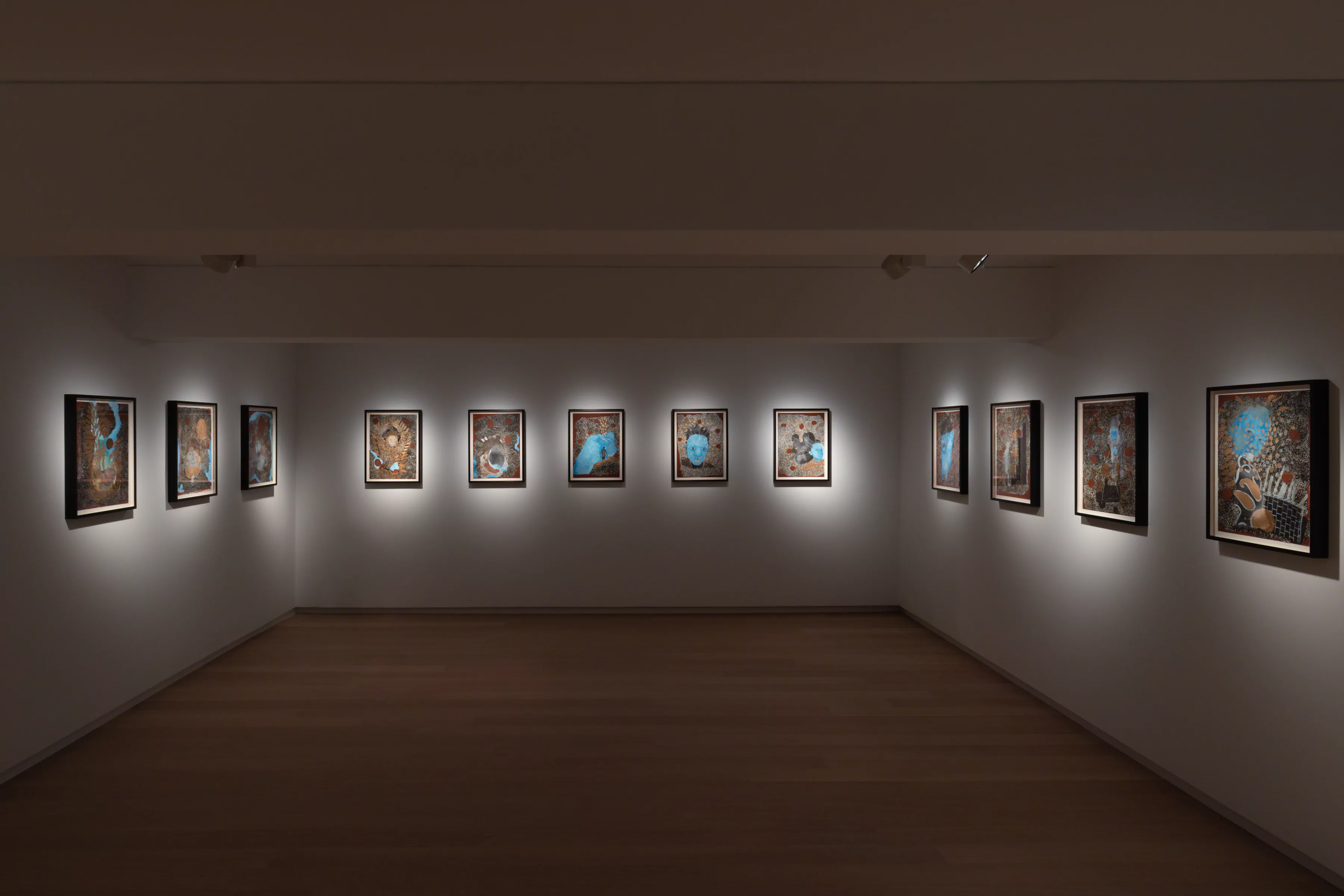
The artist
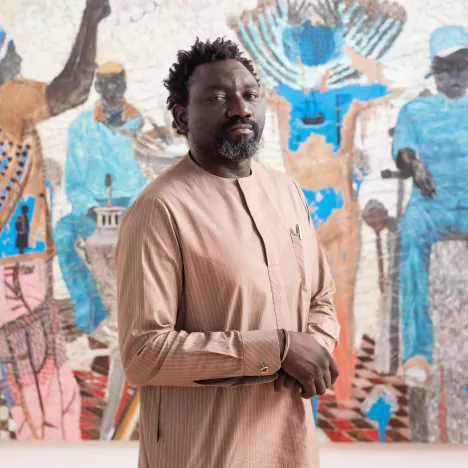
Born in 1977 in Senegal, Omar Ba lives and works in Dakar. His paintings, produced using a variety of techniques and materials, represent political and social motifs open to multiple interpretations. His artistic vocabulary raises historical and timeless questions while formulating a wholly contemporary artistic message. Omar Ba’s iconography features personal metaphors, ancestral references and hybrid figures. This combination of heterogeneous elements illustrates his desire to abolish boundaries and categories. His work, with its enigmatic nature and poetic intensity, rejects all forms of didactic narrative, seeking instead to express his subconscious and his symbolic interpretation of the real
